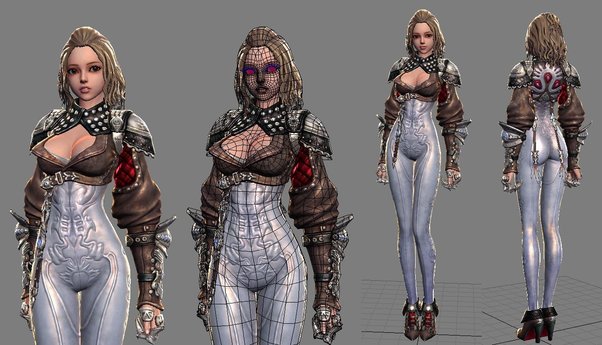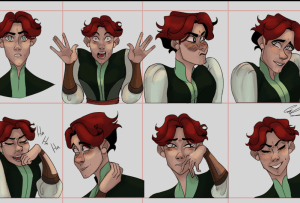The gaming industry has come a long way since its humble beginnings. In this blog post, we’ll embark on a journey through the fascinating evolution of video game visuals, focusing on the transition from pixel art to 3D character models.
1. The Golden Age of Pixels: Building Worlds with Imagination
Limited hardware capabilities in the early days of gaming (think Atari 2600, NES, and Sega Master System) led to the birth of pixel art. These blocky characters and vibrant yet basic visuals might seem primitive today, but they sparked the imaginations of millions. Iconic titles like “Space Invaders,” “Super Mario Bros.,” and “Sonic the Hedgehog” became cultural touchstones, proving that compelling gameplay could thrive within a pixelated universe.
2. The 16-Bit Revolution: Pushing the Boundaries of Pixel Art
The 16-bit era ushered in a significant leap forward with consoles like the Sega Genesis and Super NES.
Enhanced color palettes, improved sprite animation, and detailed backgrounds created a more immersive experience. Games like “Sonic the Hedgehog 2,” “Super Mario World,” and “Street Fighter II” showcased the artistic potential that could be squeezed out of pixels, solidifying the importance of visual style in video games.
3. The Dawn of 3D: A New Dimension in Gaming
The arrival of 3D graphics marked a paradigm shift in the industry. Consoles like the Sony PlayStation, Sega Saturn, and Nintendo 64 introduced polygonal models and environments, revolutionizing how we interacted with virtual worlds.
Titles like “Super Mario 64,” “Tomb Raider,” and “GoldenEye 007” offered a newfound sense of freedom and exploration, leaving players awestruck by the possibilities of 3D technology.
4. The Rise of Modern Retro: A Blend of Nostalgia and Innovation
As technology progressed, developers found ways to combine the charm of pixel art with the power of modern graphics. Indie titles like “Shovel Knight,” “Stardew Valley,” and “Cuphead” exemplify this trend, paying homage to retro aesthetics while incorporating features like high-resolution textures and advanced lighting effects. These games demonstrate the enduring appeal of pixel art and its ability to be reimagined for a contemporary audience.
5. The Legacy of Pixels and Polygons: Shaping the Future
The transition from pixels to polygons is more than just a technological advancement; it’s a testament to the creativity and passion of game developers.
Retro games continue to inspire new generations with their simple yet engaging visuals and innovative gameplay mechanics. Remastered classics and the ever-growing library of modern retro titles showcase the enduring appeal of these styles.
6. A Pixel Perfect Adventure: The Rise of Handheld Gaming
While console gaming dominated the early years, handheld devices played a crucial role in the evolution of video game visuals. The Nintendo Game Boy, released in 1989, became synonymous with portable pixelated gaming experiences.
Titles like “Tetris,” “Pokémon Red and Blue,” and “The Legend of Zelda: Link’s Awakening” captivated players on the go, proving that captivating adventures could be crafted within the limitations of handheld hardware.
Conclusion
From the charming simplicity of pixel art to the immersive worlds of 3D graphics, each era in gaming’s visual evolution has left its mark. The journey from pixels to polygons is a testament to the constant push for innovation and the enduring power of video games to transport us to fantastical worlds.
So, the next time you boot up a classic or a modern retro game, remember that every pixel and polygon tells a story, contributing to the rich tapestry of gaming history.
Find Our Website in Goodfirms
FAQs
Q: What are the advantages of pixel art?
Pixel art offers a unique aesthetic charm that can evoke nostalgia and allow for a wider range of artistic styles. It’s also less demanding on hardware, making it suitable for older consoles and mobile devices.
Q: Are 3D graphics always superior to pixel art?
Not necessarily. While 3D graphics offer a more realistic and immersive experience, pixel art can be just as effective in conveying emotions and creating a captivating atmosphere. Ultimately, the choice between pixel art and 3D graphics depends on the desired aesthetic and gameplay style.
Q: What was the impact of the 16-bit era on gaming visuals?
The 16-bit era (late 1980s to early 1990s.





